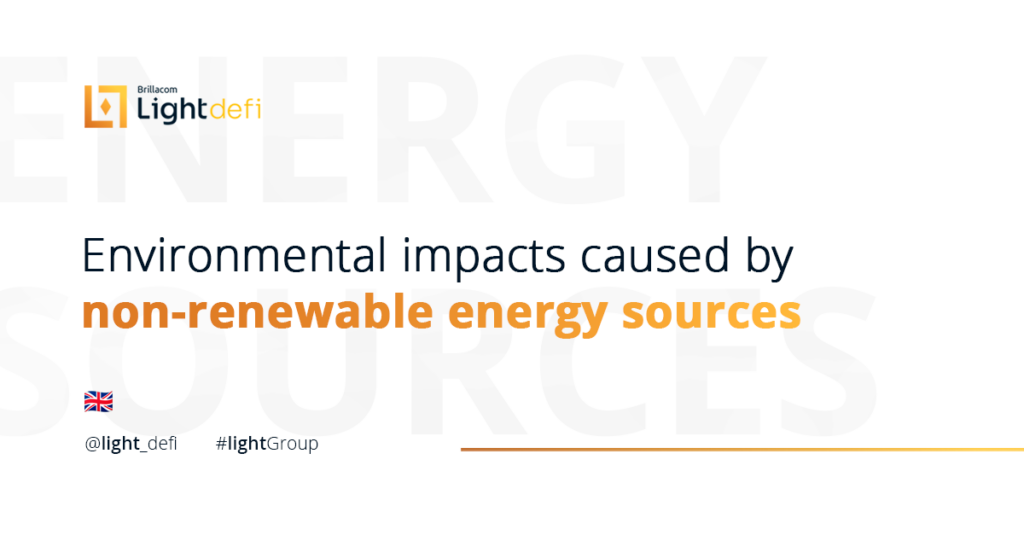The discovery of electric energy is undoubtedly one of the most important in human history. However, depending on the energy source used, many environmental impacts can be caused.
There are two types of energy sources, the renewable ones, which can be regenerated and are considered clean energy, and the non-renewable ones, which do not regenerate and bring negative impacts to the planet, mainly because they are pollutants. Non-renewable energy sources, such as fossil fuels (oil, coal, natural gas) are extremely harmful to the environment. High amounts of greenhouse effect gases and the proliferation of sulfuric acid are some of the worst consequences from the burn of these materials, since they end up strongly impacting climate change. To minimize these environmental impacts, renewable energy sources have begun to be developed; these are regenerated and exist continuously. These are examples of renewable sources: wind, water, biomass, sun, and geothermal. The main non-renewable raw material is, to this day, oil. Many conflicts between world powers and countries are caused by its extraction and use. This is an extremely used resource, since it is present in means of transportation and in the manufacturing of derivative products, such as plastic. Since burning oil is responsible for the emission of pollutants into the atmosphere, this type of fuel is extremely criticized about the environmental issue. As a consequence of this, there is a constant search by countries and entities for alternatives, such as biofuels. Another source widely used since the industrial revolutions is mineral coal, which today is the second most used energy source in the world, following the oil, which represents 26% of the resources used in global energy production. The issue is worrying, since the extraction and burning of coal are harmful to the environment. To extract it, tunnels and wells are built, mainly in environmental reserves or forests. In addition, burning is even more polluting than oil. Like oil and coal, nuclear energy also has several negative environmental impacts. It is obtained by the nuclear fission processes of uranium atoms. From the fission of the nucleus of this material, energy production is given by the large amount of energy that is released. Some of the major disadvantages of nuclear energy are: the inefficient disposal of atomic waste, which is radioactive, high production costs, and high environmental risks. From this information, it is understood that there is no other way out, investing in clean energy from renewable sources is the solution! As the definition above, renewable energy sources have the ability to replenish themselves naturally in our environment, but it is of paramount importance to understand that, although renewable, these sources are not inexhaustible. Sunlight and wind are permanent sources, but others, such as water, for example, can run out, especially if consumption is not conscious. Moreover, there are numerous environmental benefits brought about by renewable sources, both socially and economically. Their use generates very little polluting residues and requires little use of raw materials compared to non-renewable energy sources. Because of this, Light DeFi, aligned with the ESG and Agenda 2030 concepts, is building a photovoltaic plant in order to collaborate with the planet, since solar energy is a renewable source and is considered clean. The plant project, which will be located in a region with great potential, is expected to generate 200MW of energy and serve 200,000 households. Having the support of our community, , is fundamental for conquering this revolutionary project and contributing to the reduction of environmental impacts on the planet! Stay with us and join Light DeFi in this challenge! To learn more about our revolutionary project, visit our site: www.lightdefi.orgEnvironmental impacts caused by non-renewable energy sources

- Grupo Light DeFi
- January 26, 2022
- 6:00 pm

